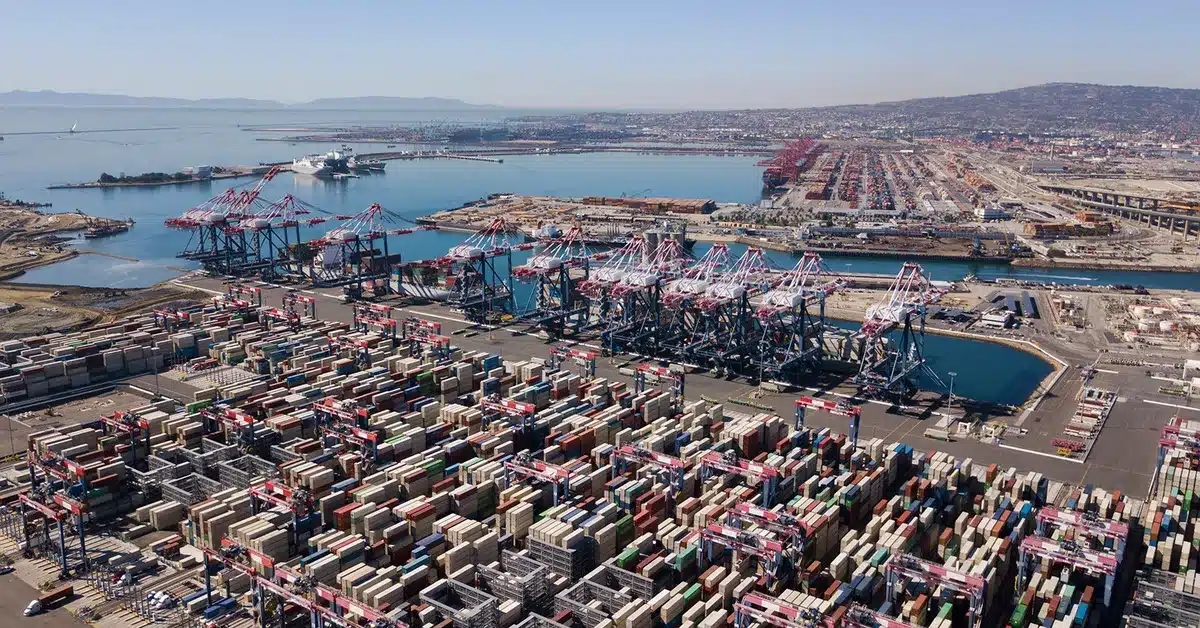Inbound Ocean TEUs Volume Index – Port of Los Angeles, Port of Savannah, Port of New York/New Jersey, Port of Long Beach SONAR: IOTI.USLAX, IOTI.USSAV, IOTI.USNYC, IOTI.USLGB
Bookings for twenty-foot equivalent units (IOTI) spiked well above last year’s levels for freight bound for the nation’s top four port complexes heading into Chinese New Year (CNY).
The IOTI is an index that measures container volumes being booked by departure date from the port of origin, about 15-30 days before landing in the U.S. A spike in orders occurs in front of the Lunar New Year celebrated in China each year.
The largest amount of maritime containerized freight heading to the U.S. originates in China. This makes it important for importers to get their freight ordered in front of the biggest Chinese holidays as production goes offline for long periods of time. This year’s data is showing a dramatic shift.
New Year, new supply chain
Last year’s spike was minimal as inventories were still fat from overordering during the pandemic era when supply chains were overwhelmed. Lunar New Year landed on Jan. 22 last year versus Feb. 10 this year, more than two weeks later.
Bookings demand shows 40% higher compared to the 10-day Chinese New Year lead-in last year. What is more interesting is the disproportionate growth of volumes at the Southern California ports compared to the two largest East Coast ports.
The Red Sea conflict has potentially had some influence while the drought in Panama is probably a greater factor as to why the East Coast has lost some share. This may not be felt as significantly thanks to the annual growth.
Rates have grown disproportionately higher on containers heading from China to the east coast versus the west, according to Freightos Baltic Exchange. Spot rates averaged around $1,300 to the west coast last year and are now close to $5,000. Rates to the east coast were $2,600 and are now close to $6,700 for forty-foot equivalent units.
Geopolitical conflict is largely to blame for the rate increases, though some would argue this is more of a sentiment than something driven by capacity shrinkage.
Regardless, importers clearly see enough risk to pay the price increases to make sure their goods are in place for the spring.
Watch the West
The takeaway for domestic transportation providers is to keep an eye on Western origins for demand spikes this spring. January and February are typically slow months for domestic shipping and especially for goods coming out of California.
The maritime data is not only showing that shippers are expecting a decent demand-side environment this spring, but they have reverted back to the pre-pandemic pattern of bringing most of their goods into the Los Angeles ports.
But don’t sleep on the East
Import demand has not grown as significantly into the Eastern ports, but the IOTI is signaling that there is potential for some increased activity in the coming weeks. The average transit time reported by carriers is around 32 days for freight moving from Shanghai to Savannah, Georgia, but there is currently an average delay of nine days on top of that, according to project44.
SONAR Container Atlas transit data shows roughly a 32-day journey, including delays for freight moving from Shanghai to the Ports of New York and New Jersey.
Not all freight hits the road after it hits the port, so there could be some warehouse stuffing that stifles the transportation potential. Regardless, it would be wise to watch both ends of the country for increasing activity. Early March for the West and late March for the East.




